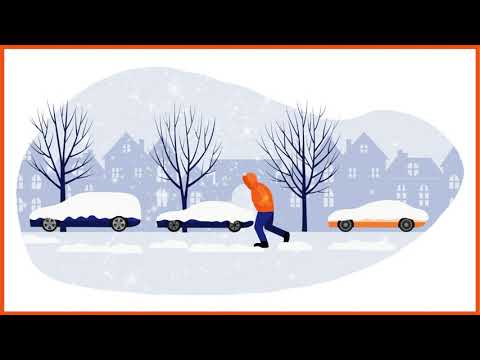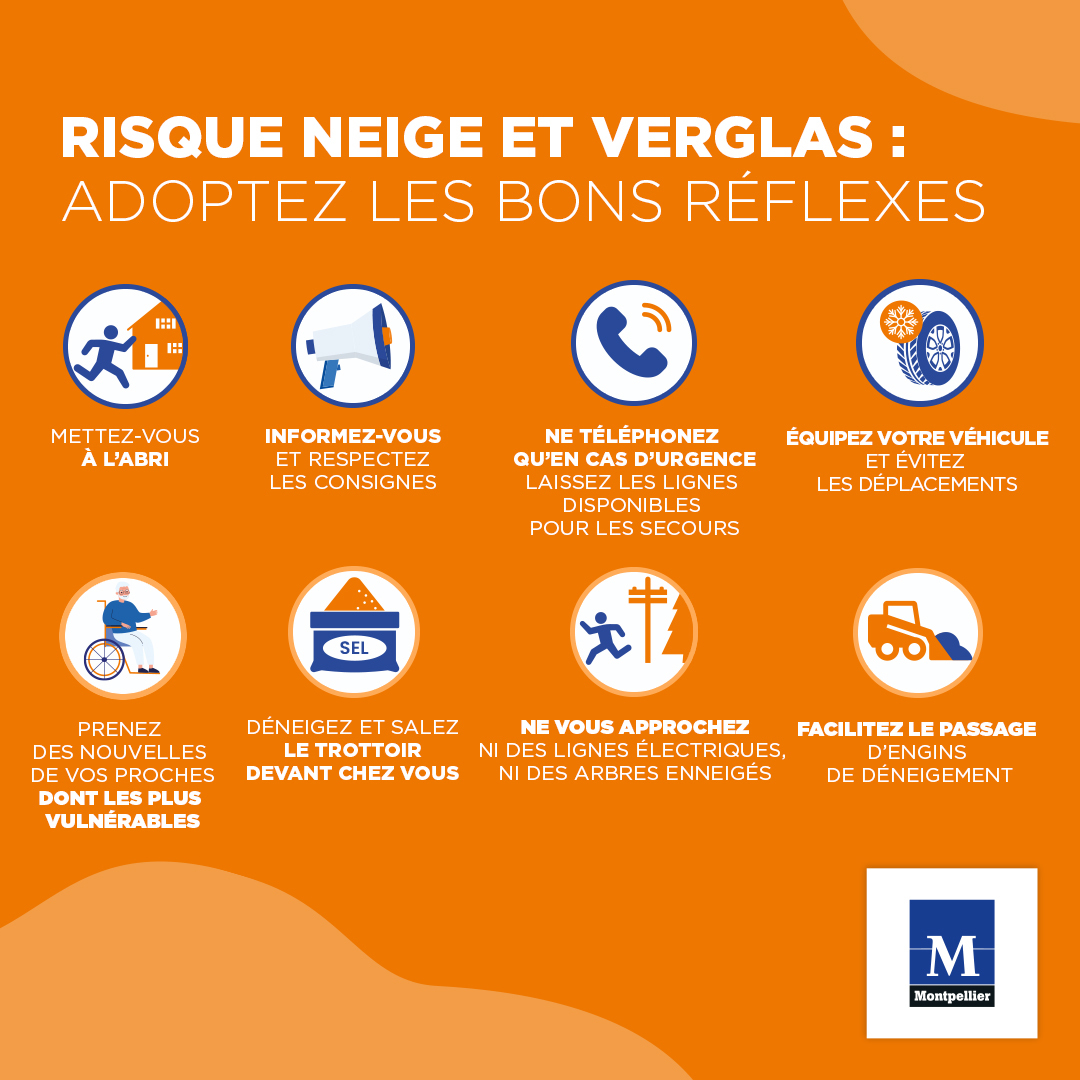Snow and ice risk
Characteristic of its Mediterranean climate, winter in Montpellier is on average "mild", with no more than 10 days of black ice and/or snowfall. However, this phenomenon can have major consequences for networks, especially roads.


Adoptez les bons réflexes
Du 15 novembre au 15 mars, une veille hivernale est activée dans le cadre du Document d'Organisation de Viabilité Hivernale (D.O.V.H).
Le D.O.V.H permet ainsi de mobiliser rapidement les services de la Métropole et de la Ville de Montpellier sur le déneigement des principaux axes de circulation, notamment la desserte des centres de secours et des établissements de santé dotés d'un service d'urgences et du centre-ville
L'application de ce plan doit permettre de résoudre les difficultés de circulation dans des délais raisonnables pour les intempéries les plus courantes.
Avant
- Informez-vous des risques et des consignes de sécurité
- Prévoyez les équipements minimums (radio à piles, réserve d'eau potable, papiers personnels, médicaments, ...)
Pendant
- Informez-vous de la situation.
- Reportez vos déplacements.
- N'exposez pas vos enfants au danger en allant les chercher à l'école. Un dispositif de prise en charge est prévu dans les écoles.
- Soyez prudents et vigilants en cas d'obligation de déplacement, privilégiez les transports en commun.
- Renseignez-vous sur les conditions de circulation auprès du centre régional d'information et de circulation routière (CRICR) ou de Bison Futé
- Respectez les restrictions de circulation et déviations mises en place.
- Facilitez le passage des engins de dégagement des routes et autoroutes, en particulier en stationnant votre véhicule en dehors des voies de circulation.
- Protégez-vous des chutes et protégez les autres en dégageant la neige et en salant les trottoirs devant votre domicile, tout en évitant d'obstruer les regards d'écoulement des eaux.
- Ne touchez en aucun cas à des fils électriques tombés au sol.
- Installez impérativement les groupes électrogènes à l'extérieur des bâtiments
- N'utilisez pas pour vous chauffer des appareils non destinés à cet usage (cuisinière, brasero, ...) et des chauffages d'appoint à combustion en continu (ces appareils ne doivent fonctionner que par intermittence)
- Pensez à déneiger et saler devant votre domicile, votre commerce... : comme le prévoit l'arrêté municipal VAR2018-5354, il vous appartient de déneiger et salez devant chez vous. Cet acte citoyen et collectif permet de garantir la sécurité des piétons sur les trottoirs.
Après
- Alertez les autorités de tout danger (18 ou 112)
Snow and ice risk in Montpellier
Over the past 30 years, the Hérault département has recorded an Index de Viabilité Hivernale (IVH) of 9 days on average where road operating difficulties have been noted. The intensity of snowfall in the area corresponds to a low snowfall zone. Normal snowfalls range from 2 cm/h to 3 cm/h, but do not exceed 5 cm/h, giving a total fall height of 20 cm.
A snowfall of just a few centimetres can:
- Seriously disrupt or even block road, tramway, air and rail traffic. This snow is easily evacuated by road traffic, but it can also melt and refreeze in the form of icy patches. The formation of black ice or icy patches renders the road network impassable and increases the risk of accidents.
- Provoke damage to infrastructure and trees, caused by overloading caused by accumulating snow.
- Provoke a risk of power lines breaking.
How are snow and ice formed?
Snow is generally formed by the condensation of water vapor in the upper layers of the atmosphere and then falls to the ground more or less rapidly, depending on its structure.
- If the flakes encounter only layers of air with temperatures < 0°C as they fall, the crystals clump together and combine to form increasingly large flakes. These crystals fall to the ground, at relative speeds of 1 to 2 cm/second, forming a layer of snow, or stratum on the ground.
- If the flakes encounter a warm layer of air as they fall from the clouds, the crystals melt and become raindrops. Combined with a near-ground temperature < 0°C, the droplets in an unstable state of supercooling will freeze onto any object to form a layer of the ice. This phenomenon is known as "freezing rain". Fog can also form ice.
